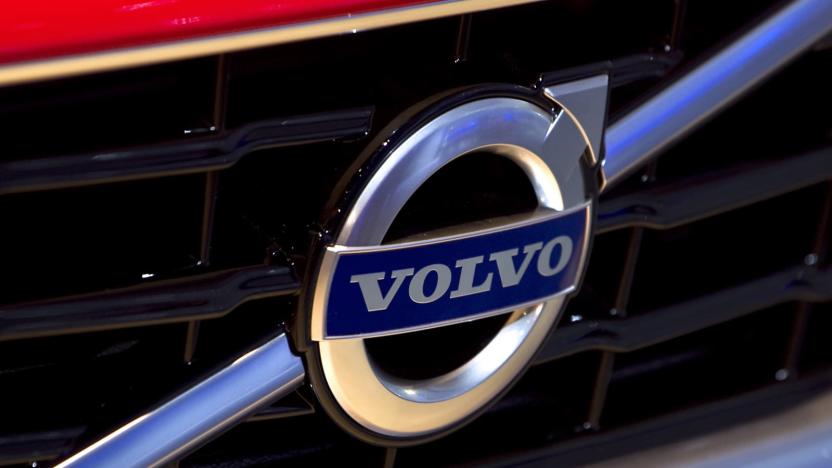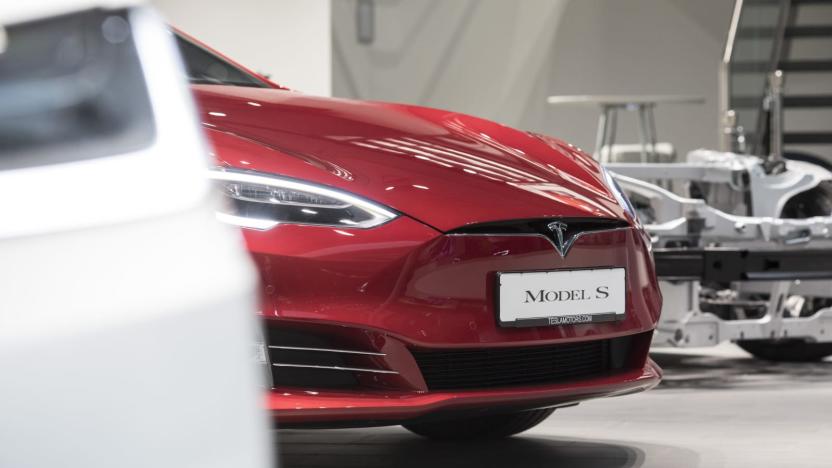level2
Latest

Daimler wants self-driving trucks on the roads in ten years
Level four autonomy is the dream of many automakers. A vehicle that drives itself without any driver interaction but has a steering wheel and pedals so that when the human in the car is ready to take control, they can. Daimler wants to put that technology in semi trucks within the next 10 years.

Lamborghini’s 650HP Urus is equal parts muscle and infotainment
Lamborghini's Urus is more than just an absurdly overpowered SUV, it's packed with technology both on the entertainment and safety sides too. That means along with its 650 horsepower twin-turbo aluminum 4.0 liter V8 (whew) you also have the option for a pair of Android Auto tablets mounted to the back of the driver and passenger seats. Oh, and there's a digital instrument cluster as well, which will either make keeping it under the 305 KMH (189.5 MPH) top speed easier or harder, depending on your driving style.

Volvo reduces autonomous driving tests to find the right sensors
Volvo is adjusting the timeline on its ambitious Drive Me autonomous program until it can find the right sensors. "The development in sensor performance and processor capabilities is going so much faster than we expected in 2013," program director Marcus Rothoff recently told Automotive News Europe. "Because advancements are being made at such a rapid pace, we want to make this decision as late as possible."

Embark's semi-autonomous trucks are hauling Frigidaire appliances
Last year, Otto made a 120-mile beer run. Now Frigidaire and Ryder have partnered with autonomous trucking company Embark to deliver smart fridges from Texas to California. You know, so you have a place to store the brews. Embark thinks that freeways are the ideal test grounds for its autonomous efforts because there aren't any traffic lights, pedestrians or oncoming traffic to deal with. Which makes sense. All a truck needs to do, basically, is stay in its lane, maintain speed and keep a safe distance from other cars.

NTSB places blame on both driver and tech in fatal Tesla crash
The National Transportation Safety Board (NTSB) has made its final determinations on the cause of the fatal Tesla Model S crash that took place in Florida in May of last year. In a report set to be released in the next few days, the NTSB concludes that the accident was the fault of both drivers and has issued a series of recommendations to the Department of Transportation (DOT), the National Highway Traffic Safety Administration (NHTSA), manufacturers of Level 2 automated driving systems, the Alliance of Automobile Manufacturers and Global Automakers.

The Chevy Bolt makes green driving fun
I've driven the Chevy Bolt a few times. At CES, briefly in San Francisco, and after a tour of the GM plant where the electric car will be assembled. But all those tests were in preproduction vehicles. Sure, they were working cars, but they weren't quite ready for consumers. The company still needed to tweak and refine the EV leading up to its official launch at a dealership in Fremont, California, in December. Finally , GM put me behind the wheel of a consumer-ready Bolt, and I wasn't disappointed.

EMW kick-starts JuiceBox, a $99 Level 2 DIY charging station
Electric vehicle charging stations aren't cheap: one of the most affordable Level 2 (240V) units sells for $450 and only supplies 16A. Electric Motor Works (EMW) -- which is best known for its electric conversion kits -- wants to change this with JuiceBox, a 15kW Level 2 EV charger that costs just $99 in kit form (plus $10 shipping). The device, which is launching on Kickstarter today, supplies up to 62A and operates on both 120V and 240V. It's built around an Arduino microcontroller and EMW is making both the hardware and software open source. But wait, there's more! The company is also crowdfunding a Premium Edition of JuiceBox ($199 in kit form) which adds time-of-day charging, a color LCD, ground-fault plus output protection (for outdoor use) and a unique enclosure (hopefully as funky as the one in the picture above). While the DIY kits only require basic assembly and soldering skills, you'll be able to buy fully assembled versions for $100 more. At $329 (shipped), a ready-to-use JuiceBox Premium Edition undercuts other similar charging stations by several hundred dollars. The catch? You'll have to supply your own cables (or buy them separately from EMW), including one with a standard J1772 EV connector. Hit the source link below to check out the campaign, and take a look at the PR after the break.

Evatran's Plugless Power wireless EV charger gets smaller, conscripts Chevy Volts for testing
When it comes to technology, the old adage of "bigger is better" died a long time ago, so it's not a surprise to see "smaller is smarter" thinking apply to products and prototypes across the board. Today's (relatively) tiny wonder is Evatran's Plugless Power electric vehicle charging system: now smaller, more efficient, and primed for its first trial phase. The last time we saw Plugless Power, the system's wireless charging "station block" stretched nearly the length of a full vehicle and charged at 80 percent efficiency. Today the charge block is only slightly larger than an average hubcap, boasts a 97 percent charging efficiency, and is less picky about your car missing the wireless charger's "sweet spot." Evatran is now working on launching a test fleet of up to 12 Chevy Volts to put the system through its paces, and hopes to expand the tests to as many as 30 vehicles by January. Ready to ditch pumps and plugs forever? Start saving: a complete Plugless Power system (including vehicle retrofitting) will set you back as much as $5000 after production starts sometime in 2012. Don't be too surprised, cool stuff rarely comes cheap -- besides, that old adage has to apply to something, doesn't it?

Hawaii funding deployment of up to 320 public EV chargers, islander Leafs say 'mahalo'
If you don't have far to go, an electric car can make a lot of sense. You know what group of people doesn't have far to go? People who live on an island, that's who. For this reason we're feeling some synergistic love as the State of Hawaii partners with AeroVironment, a company that also makes some goofy looking UAVs for DARPA, to deploy up to 320 public EV charging stations plugs across Kauai, Hawaii Island, Maui, and Oahu. All will be 240v Level 2 units that can charge an average EV in between four to eight hours. That's plenty of time to grab your board and get worked on some swell -- or to work on your tan if you're feeling a little less aggro. Update: Dan wrote in to let us know that Better Place is also getting a piece of this pie, securing $854,000 for "charging stations on all islands and the introduction of EVs to a rental car fleet."

Evatran's Plugless Power gives your wheels a wireless proximity-based charge
Trading gas nozzles for electric sockets may be the green thing to do -- in more ways than one -- but wouldn't plug-in hybrids and electric vehicles be that much sweeter if you could just forget about the plug? That's what Evatran is trying to do with its Plugless Power technology, shown off at Plug-In 2010 in San Jose, which charges your car automatically when you pull up to the company's specially-designed curb. The "station block" above is a wireless induction charger (yes, a car-sized Powermat) that beams electricity to a shoebox-sized device you mount to the undercarriage of your vehicle, magnetically detecting and gravitating towards said shoebox even if you park somewhat crooked. The system presently works with 80 percent efficiency when firing electrons across a two-inch gap (engineers are shooting for 90 percent by the time it hits production) but of course the base station itself doesn't get power from the ether -- it requires one of the company's own Level 2 wired chargers (and compatible wiring) to run. Should your residence or place of business be equipped, the 240 volt towers will set you back $3,245 this December, and the proximity charger will be available to early adopters in Q2 2011 (we're hearing April) for the bargain price of $800.

Leviton partners with Coulomb Technologies, makes EV charging stations plug-and-play
Home wiring may not be the hottest of topics, but get it wrong and, well, things can certainly get exciting. As electric vehicles become more commonplace, more and more people are going to start looking into what it will take to get more current running to their cars -- nobody's going to want to wait around for a 110V trickle charge. Leviton is a big name in home wiring and automation circles and has launched the Evr-Green sub-brand. One of its first products will be a pre-wiring kit for Level 2 charging stations, like GE's WattStation. Level 2 chargers offer 240V and, with the Evr-Green pre-wiring kit, will be basically plug and play. The kits are said to cost around $200 -- though naturally that won't include the cost of installation for the kit itself.





